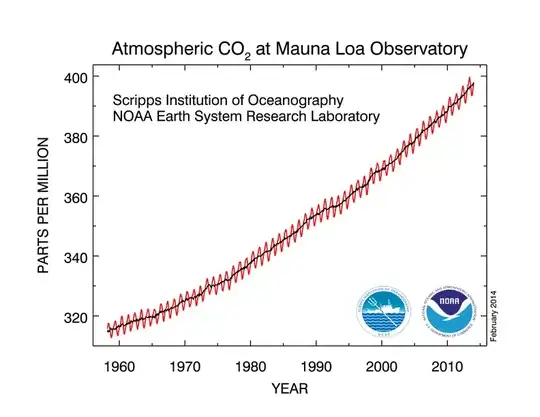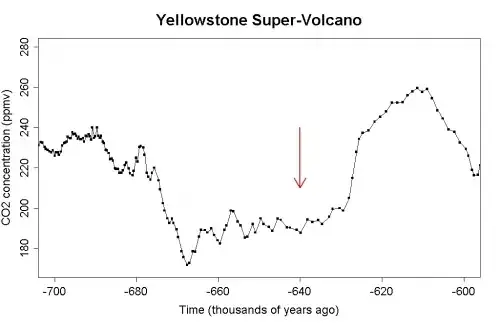No, that’s not true. In fact,
Humans emit 100 times more CO2 than volcanoes. [source]
so it’s the exact opposite.
For example, in 2008 humans emitted about 36 billion metric tons of CO2. In that same year, the highest (!) estimates for all volcanoes combined (submarine volcanoes included) were just 270 million metric tons (Gerlach, 2010).
The claim to the contrary, for instance voiced here by Ian Plimer on ABC:
Over the past 250 years, humans have added just one part of CO2 in 10,000 to the atmosphere. One volcanic cough can do this in a day.
is an artful lie. This is exposed wonderfully in a comment to that article:
Our emissions since [before the Industrial Revolution] have raised the level [from 280 ppm] to around 390 ppm, an increase in the CO2 concentration of around 40%!! The increase of 110 ppm is 1.1 per 10,000 - roughly Ian's magic number. […]
1 in 10,000 of CO2 [of 390 ppm] would add 0.039 ppm which a [volcanic] 'cough' could easily do.
So Ian Plimer arrives at his assertion by comparing two different numbers: the number of overall increase in CO2 in the atmosphere (110 ppm), and a relative percentage of the atmospheric concentration (0.039 ppm), and alleges that these numbers are the same. That’s like saying that 10$ and 10% of 10$ (= 1$) are identical.

